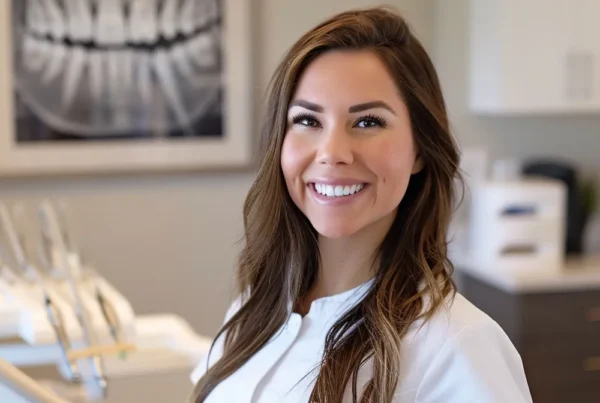To navigate securing medical insurance coverage for oral appliances, you need to focus on three key actions: understanding medical policies, classifying your appliance correctly, and thoroughly documenting your treatment process.
Understanding medical policies represents your first step by thoroughly grasping the medical policies that govern coverage. Every insurer has specific criteria for what constitutes medical necessity, often contingent on documented obstructive sleep apnea diagnosis from certified sleep studies.
Correct appliance classification proves crucial since you must correctly classify your oral appliance as Durable Medical Equipment. This means recognizing that although the appliance addresses dental conditions, it’s medical equipment for insurance purposes.
Meticulous documentation becomes essential from initial appliance prescription to detailed records of your use and effectiveness. Insurance companies often require detailed logs and evidence of use as part of their review processes.
Understanding How Medical Policies Affect Your Coverage
For you seeking insurance benefits for oral appliances, comprehending specific medical policies becomes fundamental. These policies act as determinants in defining medical necessity, establishing eligibility criteria, and avoiding deviations that lead to claim denials.
Each insurer’s medical policy contains distinct medical necessity definitions that align with their coverage standards. For example, policies may specify that oral appliances are medically necessary only if prescribed for moderate to severe obstructive sleep apnea.
Medical policies lay out clear eligibility benchmarks that must be met before coverage consideration. These benchmarks often include physician diagnoses supported by specific clinical findings or test results that substantiate your coverage claims.
Understanding medical policies enables you to avoid missteps that could potentially lead to coverage denial. Policies might reject coverage if oral appliances are used for conditions other than specified or if there’s insufficient necessity proof.
Why DME Classification Matters for Your Coverage
To ensure appropriate insurance coverage for oral appliances, you must grasp the significance of their classification as Durable Medical Equipment. This categorization proves key for separating devices from dental services, enabling medical insurance access, and steering toward appropriate reimbursement channels.
By categorizing oral appliances as DME, insurers draw clear lines between dental treatments and medical interventions. Since oral appliances treat medical conditions like obstructive sleep apnea, they’re considered medical equipment with different reimbursement processes.
Once oral appliances are classified as DME, they fall under medical insurance plan scope rather than dental plans. This means you can use health insurance benefits that often provide broader coverage with potentially higher reimbursement rates.
Understanding DME classification affects how claims are filed and dictates reimbursement channels you seek. The process involves specific documentation and coding unique to medical equipment that health providers handle more efficiently.
Building Strong Insurance Claims Through Documentation
For your insurance claims associated with oral appliances to succeed, comprehensive documentation must be regarded as the backbone. This breaks down into maintaining detailed records, providing necessity proof, and demonstrating compliance with insurance mandates.
Detailed records include granular accounts of your diagnosis, treatment plan, and progression. Formal diagnoses from sleep specialists should detail sleep apnea severity and specific reasons oral appliances have been recommended for your situation.
Comprehensive documentation strategies combine multiple evidence types to ensure your insurance claims receive thorough support and accurate processing for optimal coverage outcomes:
- Detailed medical records that include granular accounts of diagnosis, treatment plans, and progression with formal specialist documentation
- Concrete necessity evidence such as physician statements and test results indicating CPAP intolerance or unsuitability of alternative treatments
- Insurance mandate compliance through correct billing codes, submission deadline adherence, and paperwork reflecting insurer language requirements
- Complete treatment documentation from patient visits and appliance fittings to follow up assessments that paint complete pictures for insurers
- Organized record compilation that facilitates smoother claim processes while providing clear references for your treatment journey
Providing necessity proof requires concrete evidence like physician statements and test results indicating CPAP intolerance. This could include documentation of side effects experienced while using CPAP or reports explaining why alternatives are unsuitable.
Optimizing Your Path to Insurance Reimbursement
Securing insurance reimbursement for oral appliances requires carefully planned strategies that include precise coding practices, obtaining pre authorization, and choosing in network providers. These structured approaches greatly influence insurance company decisions.
Precise coding practices prove critical since insurance companies rely on coding to understand claim nature. Healthcare providers must use correct medical codes corresponding to oral appliance treatment including diagnosis codes justifying necessity.
Pre authorization represents a step that can preemptively address potential coverage issues. By seeking approval before oral appliance therapy begins, you and your healthcare provider gain confirmation of claim eligibility while preventing financial surprises.
In network provider selection offers financial benefits and streamlines reimbursement processes. These providers have established agreements with insurance companies including negotiated rates and simplified claiming procedures for lower out of pocket expenses.
Mastering Accurate Coding for Better Communication
Coding functions as essential communication medium between healthcare providers and insurance companies. Healthcare providers must master this language by applying coding protocols accurately, representing treatments consistently, and minimizing claim rejection risks.
Precise coding protocol application proves vital for submissions to medical insurers. Codes that accurately describe diagnosis, procedures, and appliances fulfill technical requirements while clarifying treatment nature and necessity for your specific situation.
Advanced coding communication combines multiple technical and procedural elements to ensure clear, accurate representation of your treatment needs and insurance coverage requirements:
- Precise protocol application that uses codes accurately describing diagnosis, procedures, and appliances for fulfilling technical claim requirements
- Consistent treatment representation across all documents and communications to ensure clear understanding and easy insurance processing
- Claim rejection risk minimization through accurate coding that prevents misunderstandings and eliminates discrepancies raising red flags
- Clear treatment communication that informs insurers about oral appliance intentions for sleep apnea therapy versus other dental applications
- Comprehensive documentation consistency that portrays complete pictures of your care journey for expedited reimbursement processes
Consistent treatment representation ensures your provided treatment is clearly understood and easily processed by insurance companies. Using same codes across all documents eliminates discrepancies that could raise system red flags.
Securing Coverage Through Pre Authorization
Pre authorization stands as critical proactive measure in insurance claim processes for oral appliances. This key step confirms medical necessity, assures you of coverage, and prevents unexpected costs while laying solid foundations for streamlined claims experiences.
The pre authorization process involves submitting comprehensive details of your condition and prescribed oral appliances to insurers for prior approval. This crucial step validates that proposed appliances are deemed medically necessary.
Pre authorization also plays significant roles in giving you peace of mind regarding treatment costs. Knowing in advance that insurance providers have approved therapy eliminates guesswork and anxiety often accompanying medical expenses.
By securing pre authorization, you and providers protect against unexpected bills from uncovered services. This step forewarns of potential out of pocket expenses while allowing informed healthcare finance decisions.
Leveraging In Network Providers for Maximum Benefits
Choosing in network providers for oral appliance therapy offers strategic financial and service benefits. It’s instrumental in minimizing personal costs, capitalizing on established relationships, and benefiting from negotiated coverage terms for optimized insurance usage.
In network providers have agreed upon rates with insurance companies, usually translating to lower copays and deductibles for you. When you select in network dentists or sleep specialists, you’re more likely to incur minimal out of pocket expenses.
In network providers work closely with insurance companies, fostering smoother communications and processes. These established relationships can expedite pre authorizations, claim submissions, and negotiations that might otherwise be complicated for out of network providers.
In network status often comes with negotiated terms more favorable to you, such as waived fees or enhanced coverage for certain therapies. Seeking oral appliance therapy from in network providers ensures you receive full spectrum benefits under your insurance plans.
Fighting Insurance Denials with Smart Strategies
Responding to insurance denials demands deliberate, evidence based approaches to construct persuasive rebuttals. To overturn denials, you need to build structured arguments, anchor them in compelling documentation, and ensure conformance to established insurance guidelines.
Building structured arguments represents the foundation of challenging denials through logical, methodical rebuttals. Structured arguments begin with clear understanding of denial reasons, whether coding errors, information lack, or medical necessity questions.
Compelling documentation anchoring proves crucial in advocating against denials through detailed medical records, diagnostic tests, physician notes, and previous insurance company correspondence. Solid evidence strengthens your position while showcasing well grounded rationales.
Ensuring conformance to established guidelines means rebuttals must align with insurer guidelines and policies. You should meticulously check that appeals conform to insurer procedural rules including filing timelines and format requirements.
Assembling Winning Documentation for Appeals
Constructing successful insurance appeals requires foundational compendiums of robust documentation. You must gather comprehensive evidence, ensure relevance and clarity, and maintain data integrity to establish solid cases for challenging insurance denials.
Gathering comprehensive evidence starts with collecting every piece of evidence supporting your claim. This includes detailed sleep study results confirming diagnosis and demonstrating condition severity alongside prescriptions and treatment plans.
Appeal documentation strategy combines multiple evidence types and organizational approaches to ensure comprehensive support for your insurance coverage challenge:
- Comprehensive evidence gathering including detailed sleep study results, prescriptions, treatment plans, and photographic evidence of oral appliance use
- Relevance and clarity assurance where every document contributes to narratives reinforcing coverage needs while being presented clearly for easy understanding
- Data integrity maintenance through original diagnostic reports, dated physician notes, and official records that reflect consistency and factual accuracy
- Complete medical narrative construction that illustrates full pictures of medical need while avoiding ambiguity or extraneous information
- Professional documentation standards that bolster appeal credibility and increase potential for favorable outcomes through unambiguous support
Ensuring relevance and clarity means every submitted document should directly relate to your case while contributing to narratives reinforcing coverage needs. Information must be presented clearly for easy insurance adjuster understanding.

Aligning Appeals with Clinical Guidelines
Fortifying insurance appeals involves aligning arguments with established clinical guidelines to strengthen credibility. These guidelines serve as benchmarks for medical appropriateness while offering authoritative references and persuasive validation to claim processes.
Clinical guidelines offer objective benchmarks defining conditions under which oral appliance therapy is deemed necessary and effective. By presenting appeals aligning with these benchmarks, claims anchor in medical community consensus.
Established clinical guidelines are often created by leading health organizations that hold weight with insurance companies. When appeals reference these guidelines, they borrow authority from prestigious bodies like the American Academy of Sleep Medicine.
Citing clinical guidelines in insurance appeals serves not only to validate medical appropriateness but also to persuade reviewers with evidence based reasoning. This demonstrates that oral appliances aren’t experimental but medically endorsed treatments.
Getting Help from Billing Advocates
Partnering with billing advocates can be pivotal in insurance appeal processes, providing expertise and guidance necessary to address denials effectively. These specialists bring deep healthcare reimbursement understanding while offering strategic insights and cooperative efforts.
Billing advocates have specialized knowledge of healthcare reimbursement systems including complex rules and regulations governing them. They’re well versed in interpreting policy nuances and can pinpoint exactly why claims were denied.
These advocates provide strategic advantages in crafting appeals by understanding which arguments hold most weight and how to present evidence convincingly. They know how to frame appeals addressing specific insurer concerns strategically.
Effective collaboration between billing advocates and you can significantly improve appeal outcomes. Advocates can guide you through compiling necessary paperwork, adhering to submission deadlines, and providing moral support through potentially stressful interactions.
Taking Active Control of Your Insurance Process
To secure coverage for oral appliances, you must proactively engage in your insurance matters. Three critical actions include comprehending insurance policy complexities, initiating early healthcare provider conversations, and meticulously managing treatment documentation.
Comprehending insurance complexities involves thorough understanding of your insurance policy intricacies. You should acquaint yourself with policy specifics like coverage limits, excluded treatments, and claim filing processes.
Initiating early conversations with healthcare providers proves crucial for navigating insurance landscapes. You should consult with dentists or sleep specialists about insurance processes, notably regarding required pre authorizations and network provider benefits.
Meticulously managing treatment documentation proves integral to your active insurance role. Compilation of all treatment related documents from diagnosis reports to billing statements ensures you’re prepared for insurance queries or audits.
Building Relationships with Your Insurance Provider
For you obtaining oral appliance therapy, initiating early discussions with insurance providers proves vital. Such engagement provides policy coverage clarity, facilitates informed decision making, and paves ways for hassle free claims processes.
Seeking policy coverage clarity proves crucial since you should inquire about insurance policy specifics as early as possible. This may include understanding policy term meanings, applicable deductibles, and oral appliance coverage extent.
Facilitating informed decision making becomes possible when armed with detailed insurance policy knowledge. You can discern whether certain treatments or appliance models are covered while discussing alternatives with healthcare providers if necessary.
Early engagement with insurers sets positive precedents for future interactions. When you communicate with insurance providers from outset, it establishes cooperative relationships and streamlines subsequent communications regarding claims or coverage questions.
Making Smart Decisions Through Policy Understanding
Understanding your medical insurance policy intricacies proves fundamental for making informed healthcare decisions and managing financial expectations. You must delve into policy specifics, understand financial responsibilities, and prepare for potential out of pocket costs.
Delving into policy specifics arms you with relevant information about your coverage scope. This includes knowledge of covered treatments, usage limitations, and terms related to oral appliance therapy for informed appliance selection.
Understanding financial responsibilities involves thorough knowledge of insurance policy details alerting you to financial obligations like deductibles, copayments, and coinsurance. Knowing these figures enables estimated therapy cost calculations.
Preparing for potential costs keeps you informed about policy details while anticipating scenarios where insurance might not cover certain therapy aspects. Awareness of potential costs ensures you’re not surprised by unexpected bills.
Organizing Your Medical Documentation for Success
Thorough organization of healthcare documents underpins insurance claim success for oral appliances. This critical task demands attention to complete records, methodical arrangement, and easy accessibility to improve insurance review process efficiency and outcomes.
Ensuring complete record collections proves essential for filing insurance claims. This means gathering every item substantiating oral appliance therapy need and process including detailed sleep study reports and specialist prescriptions.
Methodical documentation arrangement proves just as important as completeness. Chronological order or categorical grouping like diagnosis, treatment, and correspondence makes it easier for insurance adjusters to navigate your file.
Facilitating easy information access represents final pieces of effective document management. This could mean maintaining digital copies for prompt insurance company sharing or well labeled file systems for paper records.
Setting Yourself Up for Insurance Success
Establishing routines of proactive and organized practices proves critical for avoiding insurance claim complications for oral appliances. You and providers should focus on promoting understanding through education, ensuring meticulous documentation, and fostering ongoing insurer dialogue.
Enhancing understanding through education represents key preventive measures in pursuing education about insurance policies and claims processes. This involves studying different medical insurance plan particularities and familiarizing yourself with policy document terminology.
Commitment to meticulous documentation involves rigorous record keeping that cannot be overstated in importance. Accurately recorded patient encounters, treatment plans, and insurance correspondence create evidence trails proving indispensable if claims are questioned.
Maintaining transparent communication with insurers represents best practices for preempting misunderstandings and mistakes. Regular check ins discussing claim status, clarifying coverage doubts, and confirming documentation receipt prevent miscommunications delaying reimbursement.
Getting Expert Help When You Need It
Dr. Bethaney Brenner in Burlington CT significantly contributes to guiding you through intricate insurance processes associated with sleep disorder treatments. This support comprises personalized guidance, insurance system navigation, and facilitating access to necessary treatments.
Personalized guidance from professionals with specialized knowledge offers tailored advice addressing unique insurance challenges you may encounter. Dr. Brenner can assess your specific condition and insurance plan while providing documentation and procedure recommendations.
Insurance system navigation becomes clearer with expert help since often confusing pathways can be made understandable. A dentist with extensive billing experience for sleep disorder treatments can preemptively identify potential issues while advising on best practices.
Facilitating necessary treatments ensures you receive crucial treatments without undue stress or delay. By translating insurance system complexities into actionable steps, professionals like Dr. Brenner bridge gaps between medical necessity and insurance requirement fulfillment.
Achieving Your Goals Through Insurance Coverage
Providing insurance coverage for oral appliances aims at more than navigating healthcare bureaucracy complexities; it focuses on reducing your financial burdens, enhancing treatment accessibility, and promoting better health outcomes.
Reducing your financial burdens proves critical since oral appliance therapy costs can be considerable, and insurance coverage plays critical roles in reducing economic strain. When insurance covers portions or entirety of costs, you’re relieved of significant out of pocket expenses.
Enhancing treatment accessibility happens by simplifying insurance coverage processes for oral appliances, making treatments more accessible to wider patient populations. Insurance coverage acts as a gatekeeper that lowers barriers to entry when approving appliance use.
Don’t let insurance complexity prevent you from getting the oral appliance therapy you need for better sleep and health. Contact Dr. Bethaney Brenner in Burlington CT today to get expert guidance on navigating your insurance coverage and securing the treatment that can transform your sleep quality.
Book Your Consultation Today!
Dr. Bethaney B. Brenner DMD
8 Milford St, Burlington, CT 06013
Frequently Asked Questions
What is the first step in using medical insurance for an oral appliance?
Begin by understanding your specific medical policy details—this will clarify coverage limits and exclusions, which can determine your eligibility for claiming an oral appliance and help you avoid unexpected expenses down the road.
How do I ensure my oral appliance is covered by insurance?
Secure pre authorization from your insurance provider before starting treatment, which confirms the medical necessity of the appliance and gives you confidence that the costs will be covered according to your policy terms.
What if my insurance claim for an oral appliance is denied?
Don’t get discouraged by a denial; instead, prepare a structured appeal with solid documentation and reference clinical guidelines to advocate for the coverage you deserve effectively. Consider getting help from billing advocates for their expertise if necessary.





